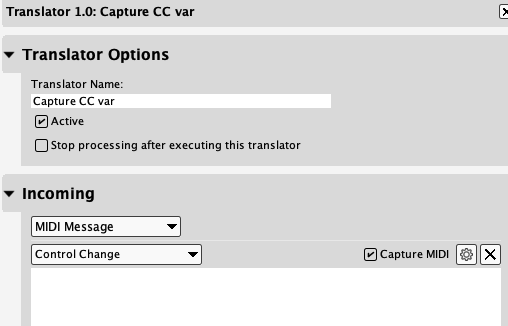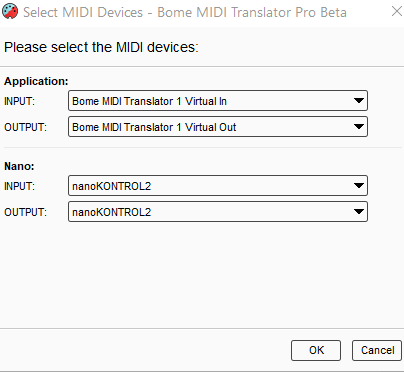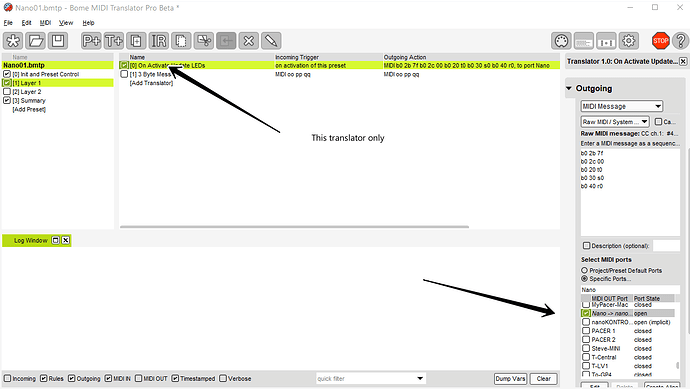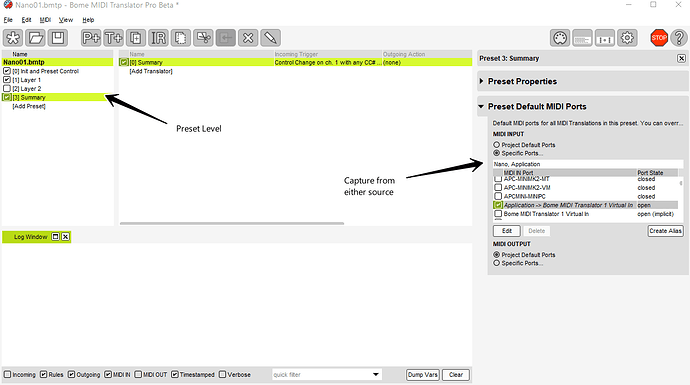I want to create multiple scenes for my Korg NanoKontrol2 effectively doubling the number of control buttons. Similar to ‘scenes’ on NanoKontrol mk1.
DAW = MainStage on OSX.
On the Nano, the 5 transport buttons can glow. I will use transport buttons 1&2 to represent scene 1&2.
Scene 1
Press transport << CC#43, make it glow, switch to Scene 1, where other CC’s go through on midi channel 1 (as normal).
Scene 2
Press transport << CC#44, make it glow, switch to Scene 2, where other CC’s go through on midi channel 2.
(this part is working well thanks Steve, feel free to upload the project thus far).
Nano buttons LED’s
Nano has 8x3=24 buttons x 2 scenes = 48 LED’s to keep track off.
Plan is to use 48 variables to store these LED values.
Scene1:Fader 1 has 3 buttons (CC#20,30,40), to be stored in var: r1,s1,t1.
Scene2:Fader 1 has 3 buttons (CC#20,30,40), to be stored in var: x1,y1,z1.
Translator successfully lights these buttons, based on the vars, using this Outgoing MIDI Message | Raw Midi code:
b0 20 t1
b0 30 s1
b0 40 r1
Capture button changes
Next part is to capture CC messages, so that when a button is pressed on Nano or MainStage, I need to capture the new glow setting in the variable, so that I can set all the LED’s correctly, each time the scene changes.
Under Project > MIDI Ports, I have ticked all MIDI inputs and outputs.
Translator (is active) > Incoming (MIDI Message, Control Change), TICK=Capture MIDI
When I press buttons on the Nano, and in MainStage, I don’t see the midi data in this box (although I do see midi data in the Log window).
Any ideas to fix that?
EDIT: Restarting the project fixed it.






